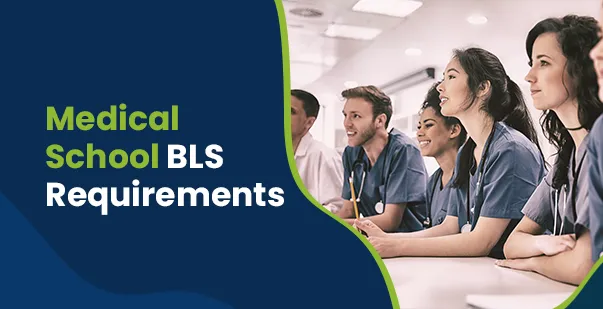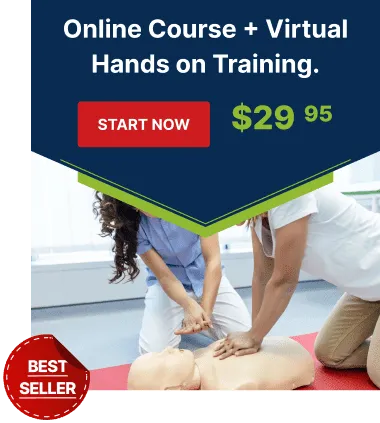Medical school competition has never been higher. In fact, according to the Association of American Medical Colleges (AAMC), the average acceptance rate for U.S. medical schools is around 7%, indicating the challenging odds. So, you need every possible advantage to enrol in your desired med school. One overlooked edge is BLS certification for medical school applications, which can enhance both your application and your readiness for medical training.
Beyond the competition, future doctors must be prepared to handle real emergencies. According to the Centers for Disease Control and Prevention (CDC) reports that 60% to 80% of out-of-hospital cardiac arrest victims die before reaching the hospital. With the rising statistics, having a BLS certification will demonstrate your commitment to patient safety and can strengthen your application. So, is a BLS needed for med school? Read on to find out!
Master BLS Now
Get BLS certified with confidence
Is BLS Certification Compulsory for US Medical School Admission?
No, BLS certification is generally not required for medical school applications in the United States. Nevertheless, once accepted, most medical schools insist that students acquire and retain American Heart Association (AHA) BLS for Healthcare Providers certification prior to participation in patient care activities. So, you do not need to be certified in BLS to apply to medical school and be accepted, but you will need to get it before you start clinical rotations, which is usually in your second year.
Most medical schools require certification before students can participate in patient care activities, making it a requirement for graduation rather than admission.
How Early BLS Certification Benefits Pre-med Students
BLS certification in your premed journey provides advantages beyond meeting medical school requirements. An early credential will make you stand out in the following ways,
Enhance Your Clinical Experience Opportunities
Most hospitals and clinics are seeking volunteers and interns who have a valid BLS certification. BLS is often non-negotiable for roles involving direct patient contact, such as:
- Helping in the emergency department.
- Assisting in outpatient procedures.
- Working at health fairs.
Getting certified early means you: qualify for more hands-on roles, move beyond observational volunteering, and make better use of a gap year or summer clinical experiences.
Improve Your Confidence in Medical Settings
While pre-med students don’t deliver care independently, BLS training equips you with the skills to remain calm and act appropriately if a patient or bystander goes into distress. You’ll be able to do the following:
- Recognize cardiac or respiratory arrest.
- Perform chest compressions.
- Correct ways to give rescue breathing.
- When and how to use an AED.
- Proper protocol for calling for help in clinical settings.
Gain Research and Publication Opportunities
Some emergency medicine and public health research projects look for participants with clinical certifications. Being BLS-certified opens doors to emergency medicine research opportunities and case study participations, simulation research, or other projects that may lead to poster presentations or publications.
Boosts Your Medical School Application Profile
Including BLS training on your resume or personal statement can reflect your preparedness to enter clinical medicine. It will reinforce your motivation to work in high-pressure environments and complement stories in your personal statement or interviews about real-life experiences.
Read More: Do You Need BLS If You Have ACLS
How to Combine BLS Certification with Your Med School Application Process
BLS for pre-med students requires an early approach to ensure you are prepared for any school-specific requirements. Being prepared with your certification saves you from last-minute stress and potential application delays. Let’s look at some of the strategies that enable you to prepare suitably for your target schools.
Gather the Required Documents
Medical schools usually ask for formal proof of your BLS certification in the form of the issuing body (usually the American Heart Association), certification number, and date of expiration. You will need to submit photocopies of your certification card and possibly upload electronic copies through application portals. Keep multiple copies, both paper and electronic, for easy access throughout the application cycle.
Learn the School-Specific Requirements
Different medical schools have varying requirements for timing and specifics for the BLS course for future doctors. Some schools require certification before admission, while others need it during orientation. Research each school’s specific requirements early in your application process to ensure compliance.
Here’s a brief overview of the medical School BLS requirement for different programs (Basic Life Support (BLS) | Medical School)
| Program Type | Duration | BLS Requirement Timing | Requirement Variations |
| MD (Doctor of Medicine) | 4 years + 3+ years residency | Before clinical rotations (Year 2) | Required for all clinical rotations and residency |
| DO (Doctor of Osteopathic Medicine) | 4 years + 3+ years residency | Before clinical rotations (Year 2) | Same as MD requirements, plus 300 hours of Osteopathic Manipulative Medicine (OMM) training |
| PA (Physician Assistant) | 2-3 years | Before clinical rotations (Year 2) | Clinical rotations start earlier than medical school |
| NP (Nurse Practitioner) | 2-4 years (post-RN) | Before clinical rotations | Often builds on existing Registered Nurse (RN) certification |
| BSN/RN Programs | 2-4 years | Before clinical rotations | Required for National Council Licensure Examination (NCLEX) eligibility |
| Physical Therapy (DPT) | 3 years | Before clinical rotations | Required for most clinical placements |
| Respiratory Therapy | 2 years | Before clinical rotations | Mandatory for clinical practice |
| Emergency Medical Services | 6 months – 2 years | Program entry | Higher certification levels are required |
Add to AMCAS and AACOMAS Application
Your BLS certification may be added to your American Medical College Application Service (AMCAS) or American Association of Colleges of Osteopathic Medicine Application Service (AACOMAS) application in the experiences section. Be sure to enter your certification date, issuing agency, and associated volunteer or work experience. This information informs admissions committees of your dedication to healthcare and emergency readiness. Some institutions directly seek this information as part of the review.
Prepare for the Interview Process
Medical school interviews can involve queries regarding your BLS training as well as emergency response skills. You should be prepared to describesituations in which you could apply these abilities. For example, an interviewer may ask how you would respond if a patient suddenly collapsed in a hospital waiting area, showing no pulse or breathing. Those who can clearly explain the significance of basic life support within healthcare environments tend to make a stronger impression.
How to Maintain Your BLS Certification Throughout Medical School
Your BLS certification is only valid for two years, so keeping it up to date is essential throughout your medical education. Here is how you can remain in compliance and assured in your abilities:
Stay Aware of Renewal Timeline
Coordinate your renewal timeline to prevent expiration during board exams or clinical rotations. Several medical schools offer renewal sessions on campus, allowing for easy renewals among students.
Practice Regularly
Regular practice and ongoing education keep your BLS proficiency up to date while attending medical school. Practice simulation, refresher courses, and practice with fellow students to stay proficient.
Plan for Advanced Certification
As you advance through medical school, think about obtaining advanced certifications such as ACLS (Advanced Cardiovascular Life Support) or PALS (Pediatric Advanced Life Support). ACLS is typically mandatory for residents of emergency medicine, anesthesiology, and critical care. PALS is beneficial for those going into pediatrics or family medicine.
Learn with Modern Technology
BLS training today includes new technology and online learning platforms. You’ll have to keep up with mobile applications and digital skill tracking systems to maintain your skills between official renewal cycles.
Common Myths About BLS Certification for Med School
Several misconceptions surround BLS certification for medical school applications. Take a look at some misconceptions and check out the facts to make a better decision.
Myth 1: BLS Certification Guarantees Medical School Acceptance
BLS certification does strengthen your application, but it will not guarantee medical school admission. Admissions committees consider factors such as Grade Point Average (GPA), Medical College Admission Test (MCAT) scores, clinical experience, and personal statements. BLS certification is one component of a solid application plan. In fact, as per AAMC, the average matriculant overall GPA in the most recent cycle (2024 – 2025) was 3.79 for MD programs.
Myth 2: Any CPR Training Satisfies Medical School Requirements
Not every CPR certification qualifies to fulfill medical school BLS requirements. Schools specifically require healthcare provider-level BLS, which is separate from general cardiopulmonary resuscitation (CPR) training for laypeople. Always check that your course is compatible with your desired school’s requirements.
Myth 3: Online BLS Training Is Never Accepted
Although a few do want on-site training, the majority accept online BLS certification as viable, according to current regulations. Review your prospective schools’ stance on online certification before choosing a method of training. Coursework that combines the use of online training with practice sessions typically provides the best of both worlds.
Myth 4: BLS Certification Is Only Required During Clinical Years
Most students believe that BLS certification applies only to clinical rotations. Certification early on provides opportunities for volunteering, shadowing, and half-time clinical positions. Some schools require certification before matriculation, so preparation beforehand is warranted.
Myth 5: All Medical Schools Have Identical BLS Requirements
BLS requirements vary significantly between medical schools and even within programs at one school. Review individual requirements for each of the schools on your application list. Some accept a certification that has a prior expiration date, but you must renew it in a timely manner.
Myth 6: International Students Don’t Need US BLS Certification
International students tend to take local certifications as their requirements. However, in fact, most US institutions require the American Heart Association, the American Red Cross, or any other U.S.-recognized, accredited agency prior to clinical rotations.
BLS Certification: Start Your Medical Career with the Right Step!
The benefits of BLS certification for medical school go beyond applications. The skills acquired during BLS training will benefit you throughout your entire medical career, from your initial clinical rotation to your last day of practice. Medical school competition will continue to grow; having a BLS certification makes you stand out, ensuring that you’re prepared for the responsibilities of patient care.
Smart pre-med students get certified early, unlocking better volunteer opportunities, building confidence in medical settings, and proving they’re ready for the responsibilities of healthcare. If you want to be one of them, enroll in our comprehensive online BLS course today. Our course meets all medical school requirements and provides the flexible learning format you need to succeed.







